There are lots of crazy lenses out there that were produced in such limited numbers or are so expensive that they're basically off-limits to most photographers. Here are 10 equally extreme lenses you can actually purchase and use!
Photography has consistently focused on documenting the remarkable, securing transient moments that might otherwise fade into recollection. Yet specific lenses push this endeavor to astonishing extremes, testing the core boundaries of optical engineering and design. These aren't typical standard optics or conventional professional instruments – they're the exceptional optical specimens that cause photographers to halt mid-conversation and exclaim, "You can genuinely buy that!?"
From light-collection abilities that exceed human sight to focal ranges that bring remote celestial bodies within apparent grasp, these lenses showcase the peak accomplishments in contemporary commercial optical engineering. They're not exhibition items or experimental models restricted to laboratory demonstrations. These are obtainable, physical lenses that photographers can purchase and employ to create imagery that was impossible mere decades ago.
Some challenge aperture limits to gather photons with insatiable hunger. Others stretch focal ranges to astronomical scales or compress ultra-wide views into seemingly impossible angles. Several explore magnification territories approaching microscopic domains, while others combine features in ways that theoretically shouldn't work yet remarkably succeed.
1. Canon EF 200mm f/2L IS USM: The Supreme Portrait Weapon
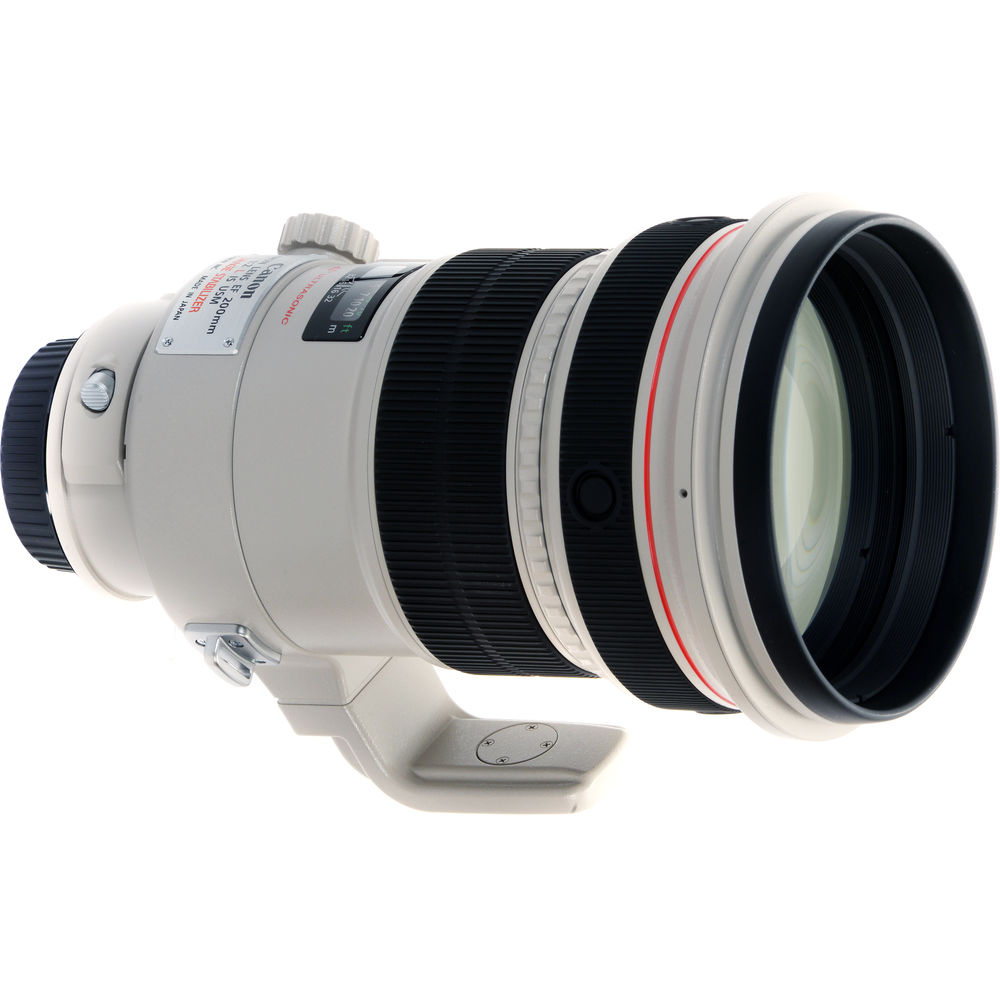 When Canon introduced the 200mm f/2 in 2008, the photography world's unified astonishment was unmistakable. This surpassed conventional telephoto engineerin;– it constituted an attack on physical constraints. Boasting a front element approaching dinner plate proportions and pricing equivalent to vehicle purchases, the 200mm f/2 immediately earned legendary recognition as one of the most revolutionary portrait optics ever created. While intended as an indoor sports and short wildlife lens, it found a second home as the ultimate portrait lens.
When Canon introduced the 200mm f/2 in 2008, the photography world's unified astonishment was unmistakable. This surpassed conventional telephoto engineerin;– it constituted an attack on physical constraints. Boasting a front element approaching dinner plate proportions and pricing equivalent to vehicle purchases, the 200mm f/2 immediately earned legendary recognition as one of the most revolutionary portrait optics ever created. While intended as an indoor sports and short wildlife lens, it found a second home as the ultimate portrait lens.
The f/2 aperture creates depth of field so remarkably shallow it's calculated in millimeters rather than inches. Focus accuracy becomes utterly critical because even slight mistakes result in sharp eyes while ears vanish into complete blur. This represents portraiture pushed to its theoretical limit, where subject separation transcends quality — it becomes almost supernatural.

The optical excellence equals the engineering boldness. Wide open at f/2, this lens creates razor-sharp images with background blur that has gained legendary reputation. Professional portrait photographers who can obtain it celebrate its precise subject isolation abilities while preserving image quality matching the best primes at any focal distance. The stabilization mechanism, perfected through several generations, allows handheld photography even at these extreme focal ranges.
Obviously, Canon isn't alone in pushing super-telephoto aperture boundaries. Sony's FE 135mm f/1.8 GM and Sigma's 135mm f/1.8 DG HSM Art both provide similar subject isolation at somewhat shorter focal distances, while Nikon's AF-S 200mm f/2G VR II offers comparable reach, and Fujifilm's XF 200mm f/2 R LM OIS WR offers an APS-C version. For anyone who wants a lens that instantly makes their work stand out, a 200mm f/2 will do the job.
2. Sigma 14mm f/1.8 DG HSM Art: Demolishing Ultra-Wide Speed Barriers
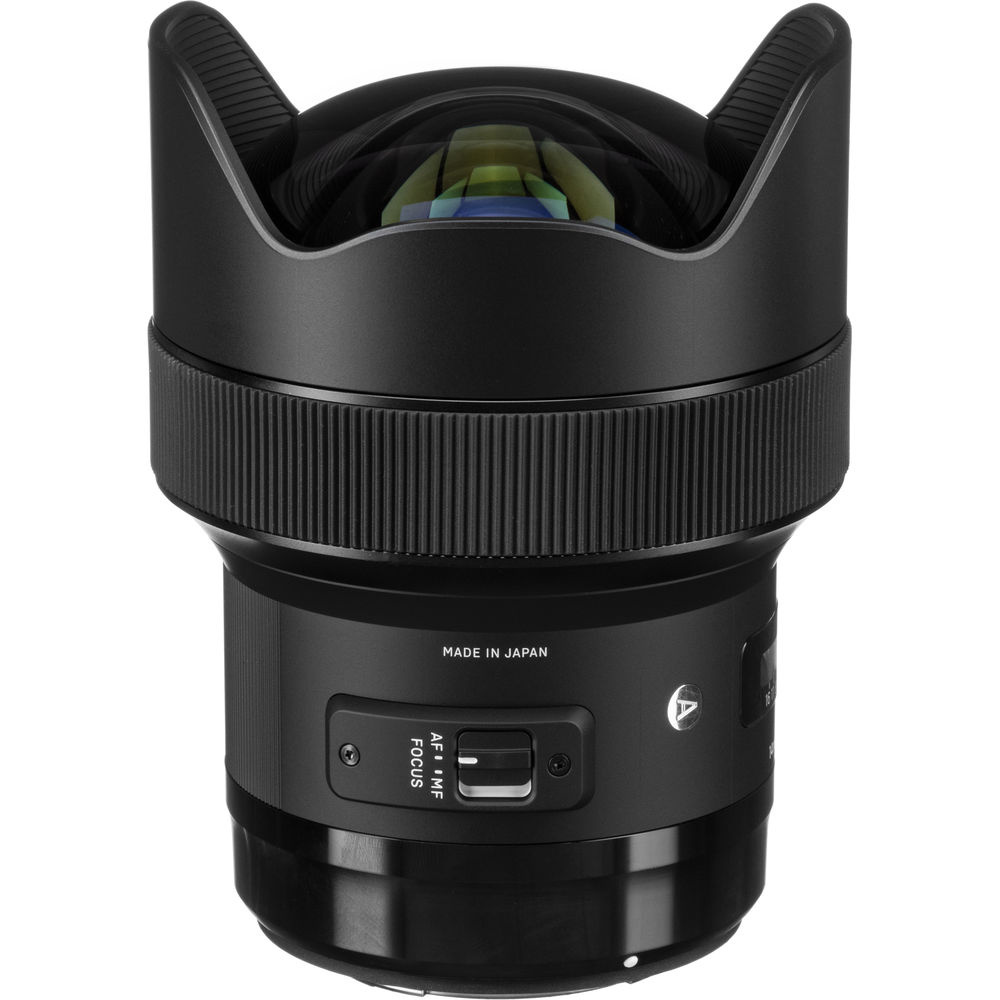 For generations, photographers understood that ultra-wide lenses demanded aperture speed sacrifices. Wide angle optics, with their massive front elements and complex corrections, simply couldn't surpass f/2.8 without excessive cost and size penalties. Then Sigma shattered this conventional wisdom with the 14mm f/1.8 Art, a lens that challenges possibility yet undeniably exists.
For generations, photographers understood that ultra-wide lenses demanded aperture speed sacrifices. Wide angle optics, with their massive front elements and complex corrections, simply couldn't surpass f/2.8 without excessive cost and size penalties. Then Sigma shattered this conventional wisdom with the 14mm f/1.8 Art, a lens that challenges possibility yet undeniably exists.
The engineering triumph here cannot be overstated. Creating a 14mm lens with f/1.8 aperture forced Sigma to completely reconstruct ultra-wide optical design fundamentals. The optical formula incorporates aspherical elements, fluorite-equivalent glass, and computational corrections representing state-of-the-art lens manufacturing technology.
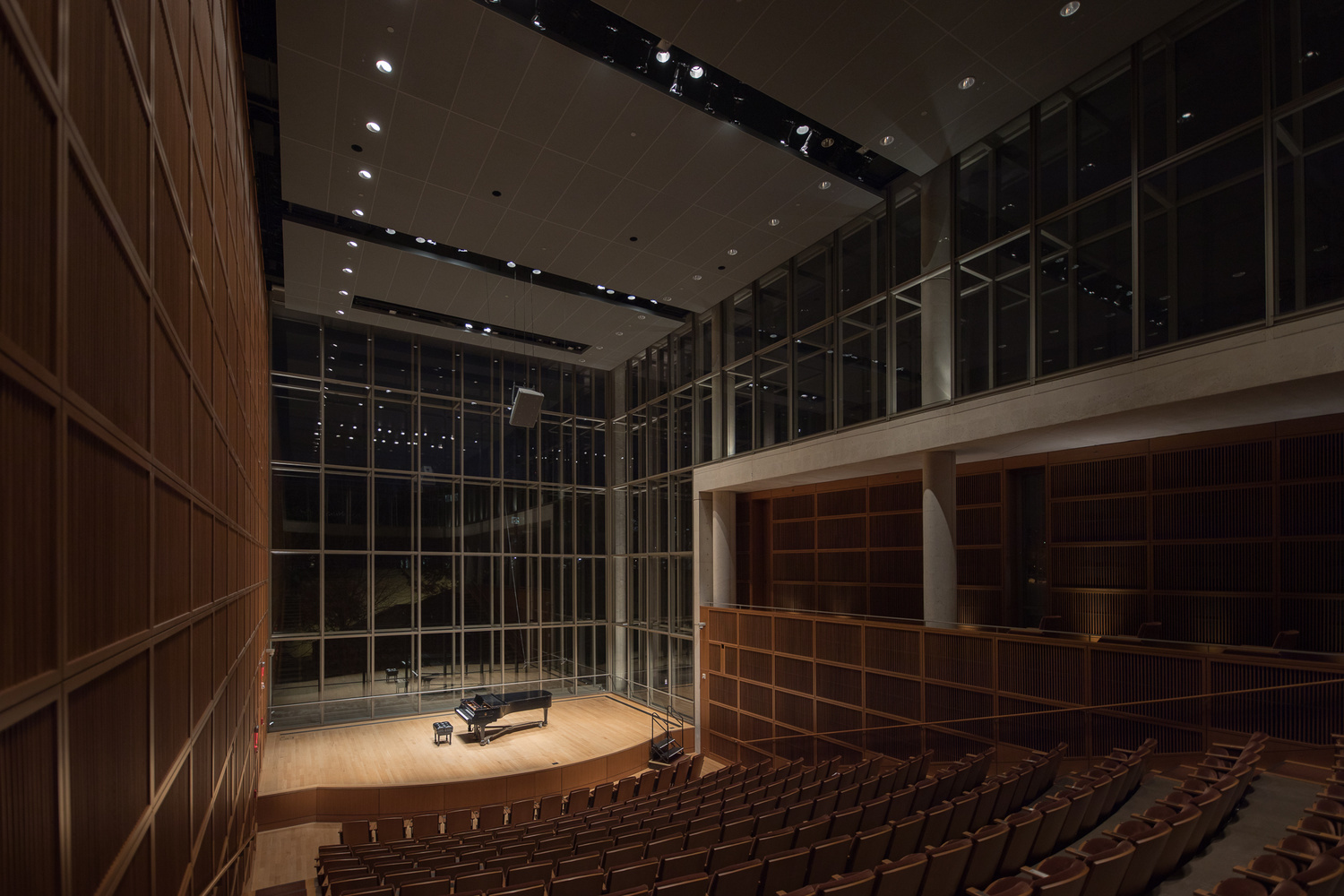 What makes this lens genuinely extraordinary is its wide-open capability. Earlier ultra-wide lenses usually required stopping down to f/4 or f/5.6 for peak sharpness, but the 14mm f/1.8 delivers outstanding results at maximum aperture, as you can see in my review. This enables previously impossible creative opportunities – astrophotography with exposure durations measured in seconds rather than minutes, handheld interior architectural work, and, dare I say, environmental portraits with impossible depth of field qualities.
What makes this lens genuinely extraordinary is its wide-open capability. Earlier ultra-wide lenses usually required stopping down to f/4 or f/5.6 for peak sharpness, but the 14mm f/1.8 delivers outstanding results at maximum aperture, as you can see in my review. This enables previously impossible creative opportunities – astrophotography with exposure durations measured in seconds rather than minutes, handheld interior architectural work, and, dare I say, environmental portraits with impossible depth of field qualities.
Sigma doesn't dominate 14mm aperture innovation. Sony's FE 14mm f/1.8 GM provides similar specifications with autofocus and weather-sealing benefits for mirrorless systems. Nevertheless, Sigma's version pioneered this extreme 14mm aperture and remains more economical while providing equivalent optical performance. Both lenses demonstrate ultra-wide f/1.8 optics are not just possible but practical, making either choice the undisputed speed champion in ultra-wide categories. And if you want to go even more extreme, there's now a 14mm f/1.4 available.
3. Canon MP-E 65mm f/2.8 1-5x Macro: Photography Encounters Microscopy
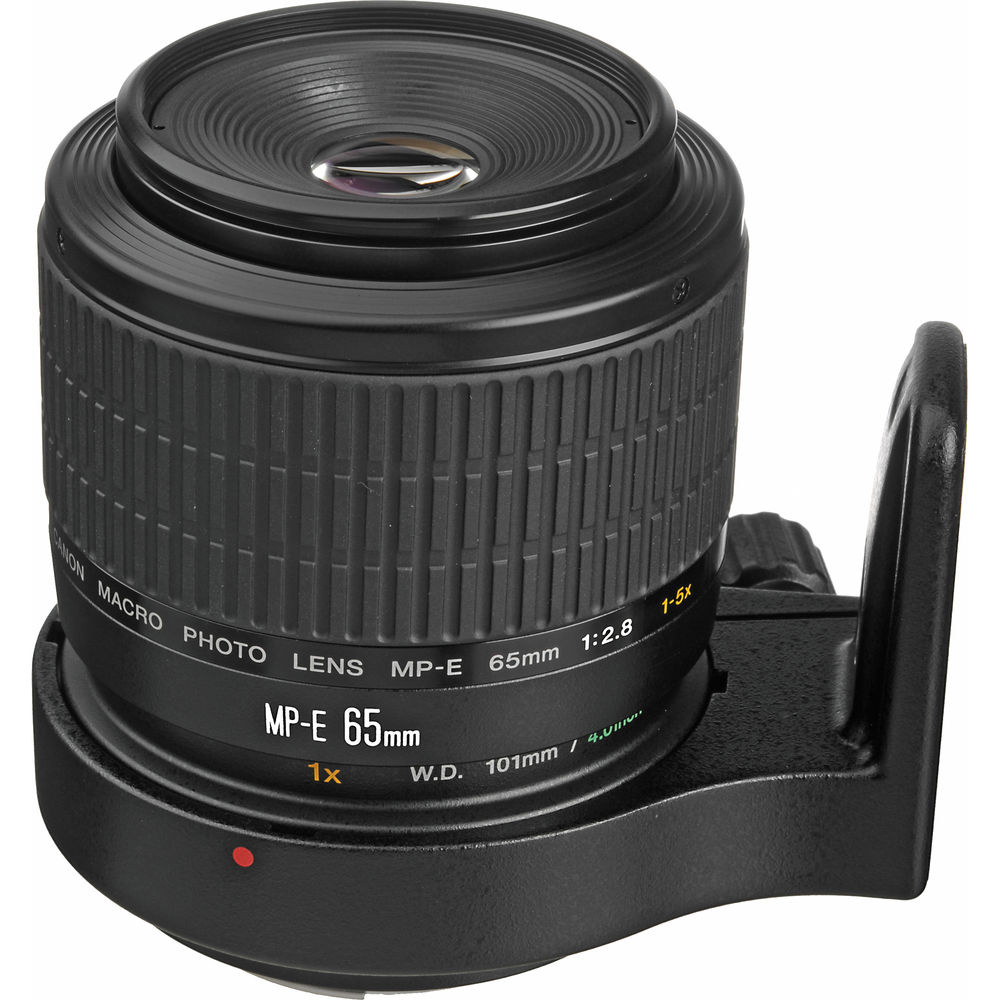 Most macro lenses stop at 1:1 magnification, where 24mm subjects fill full-frame sensors. The Canon MP-E 65mm launches this idea into the stratosphere, offering magnifications from 1x to 5x that dive into microscopic realms. This transcends extreme macro photography. It's a portal to invisible worlds constantly surrounding us.
Most macro lenses stop at 1:1 magnification, where 24mm subjects fill full-frame sensors. The Canon MP-E 65mm launches this idea into the stratosphere, offering magnifications from 1x to 5x that dive into microscopic realms. This transcends extreme macro photography. It's a portal to invisible worlds constantly surrounding us.
The MP-E 65mm operates fundamentally differently from standard lenses. It cannot reach infinity focus, instead functioning exclusively within macro ranges with magnifications making subjects larger than life-size. At 5x magnification, salt crystals fill complete frames, while housefly compound eyes become geometric perfection landscapes. Working distance at maximum magnification reduces to mere inches, demanding specialized lighting and techniques approaching scientific photography.
Effectively using this lens requires completely rethinking macro photography technique. Depth of field at 5x magnification measures in millimeter fractions, making focus stacking not simply helpful but absolutely necessary for anything beyond abstract blur. Camera support becomes vital, as even minor shutter mechanism vibrations can ruin images. Many photographers employ focus rails, specialized macro flash systems, and mirror lock-up to achieve tack-sharp results.
The optical performance, however, validates demanding technique requirements. Canon designed this lens to provide remarkable sharpness and contrast even at extreme magnifications, with floating internal elements maintaining correction as magnification varies. Results expose details invisible to naked eyes: salt crystalline formations, complex insect wing patterns, alien flower stamen landscapes magnified beyond recognition.
While other manufacturers provide high-magnification macro alternatives like the Laowa 25mm f/2.8 2.5-5x Ultra Macro and various microscope objective adapters, none equal the MP-E 65mm's pioneering combination of magnification range. It remains the undisputed extreme macro photography leader, opening creative possibilities stretching far beyond traditional nature photography into scientific documentation and abstract art.
4. Sigma 300-800mm f/5.6 EX DG HSM 'Sigmonster': The Physics-Defying Zoom
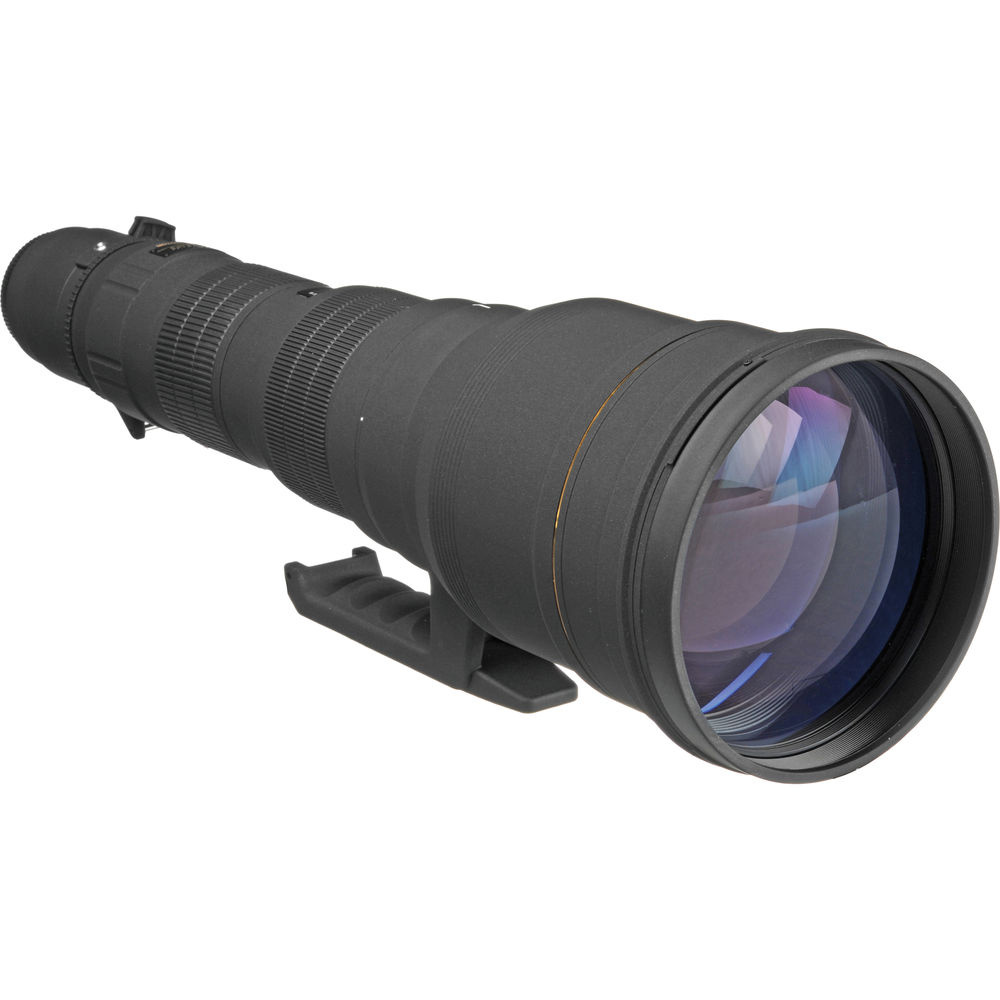 When Sigma launched the 300-800mm f/5.6 in 2007, the photography world unanimously dubbed it "Sigmonster" — a name earned through pure audacious determination. This lens represented an attempt to build something impossible: a zoom lens covering extreme telephoto focal lengths while maintaining relatively bright constant aperture throughout its range.
When Sigma launched the 300-800mm f/5.6 in 2007, the photography world unanimously dubbed it "Sigmonster" — a name earned through pure audacious determination. This lens represented an attempt to build something impossible: a zoom lens covering extreme telephoto focal lengths while maintaining relatively bright constant aperture throughout its range.
The engineering obstacles of creating a 300-800mm f/5.6 zoom are staggering. Traditional telephoto zoom lenses typically experience substantial maximum aperture reduction as focal length increases, but Sigma maintained f/5.6 across the entire range. This demanded internal elements of massive size and complexity, resulting in a lens measuring almost three feet long and weighing over twelve pounds. It's less lens than portable telescope with autofocus capability.
The Sigmonster's expertise extends beyond simple reach. At 800mm, it combines with Sigma's 2x teleconverter to achieve 1600mm f/11: a focal length bringing distant wildlife and sports action close enough to count individual feathers or facial expressions. The constant f/5.6 aperture maintains reasonable shutter speeds even at extreme focal lengths, while optical stabilization provides essential handheld shooting support when tripods aren't practical.
Despite extreme specifications, the 300-800mm provides surprisingly excellent optical performance across its range. Sigma's engineers successfully controlled chromatic aberrations and distortions typically plaguing extreme zoom designs, creating genuinely usable professional wildlife and sports photography tools. The autofocus system, while not lightning-fast, proves adequate for most subjects not moving at high speeds.
Sigma has since evolved this concept with the newer 300-600mm f/4 DG OS Sports, trading some reach for a brighter aperture. This newer design maintains f/4 throughout its zoom range, offering superior low-light performance and shallower depth of field, as well as improved autofocus and image quality. Both lenses represent Sigma's commitment to pushing zoom lens boundaries into territories major manufacturers typically reserve for expensive prime lenses, proving extreme versatility doesn't always require compromise.
5. Laowa 24mm f/14 Probe Lens: Photography's Most Unconventional Tool
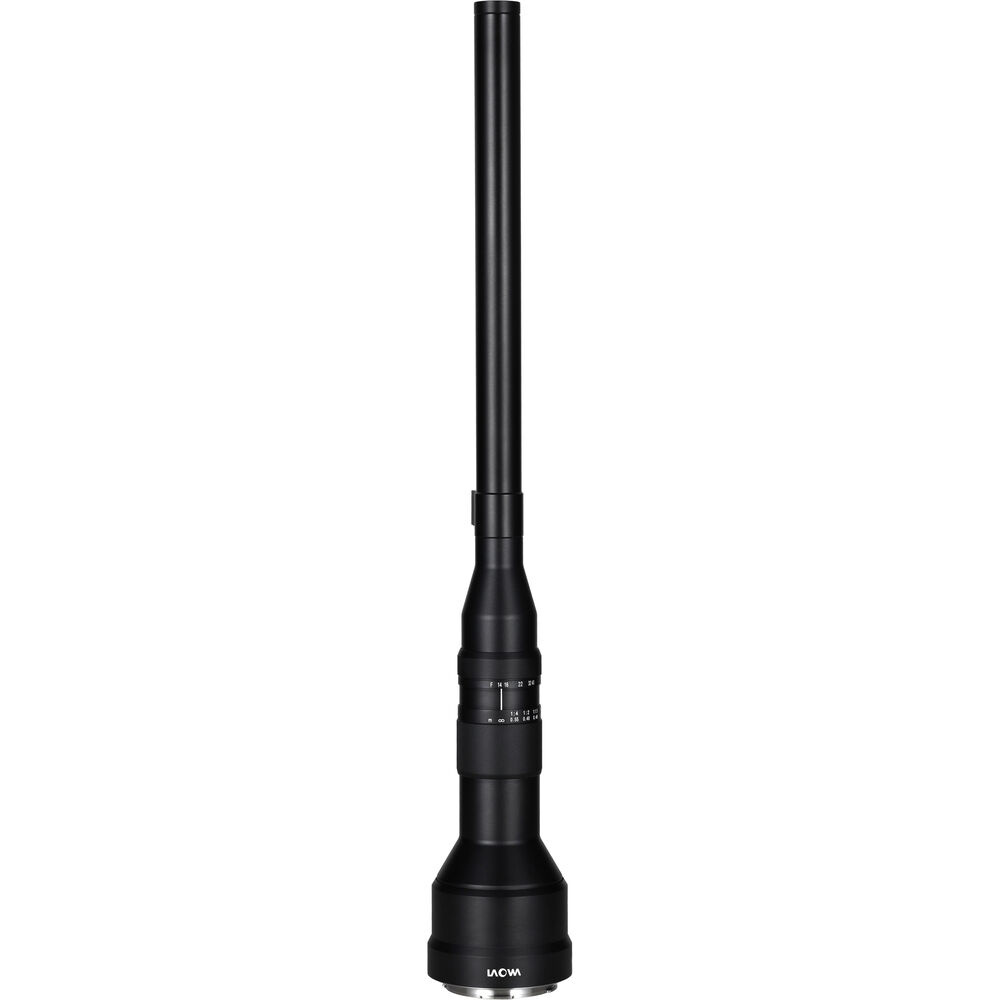 Venus Optics' Laowa 24mm f/14 Probe resembles medical equipment more than camera optics. With its 15-inch tubular barrel and integrated LED ring light, this lens challenges the fundamental definition of camera optics. As the first commercially available probe lens for photographers, it pioneered a completely new category that has since inspired other manufacturers to develop their own versions, but Laowa's original design remains the accessibility and performance benchmark.
Venus Optics' Laowa 24mm f/14 Probe resembles medical equipment more than camera optics. With its 15-inch tubular barrel and integrated LED ring light, this lens challenges the fundamental definition of camera optics. As the first commercially available probe lens for photographers, it pioneered a completely new category that has since inspired other manufacturers to develop their own versions, but Laowa's original design remains the accessibility and performance benchmark.
The probe lens concept is brilliantly simple yet revolutionary. That extended, narrow barrel can slip into spaces barely larger than quarters, while maintaining a respectable 24mm field of view and macro capabilities up to 2:1 magnification. The front element sits mere millimeters from subjects, allowing photographers to capture perspectives that feel almost surreal – views from inside flowers, between coral formations, or through narrow rock formation crevices.
What makes this lens truly special is its waterproof construction. The front section can be submerged, opening underwater macro photography possibilities that would require expensive housing systems with traditional lenses. Combined with built-in LED lighting, photographers can explore underwater environments with a single, relatively affordable tool. The unusual perspective creates images that feel more like computer graphics than traditional photography.
The optical performance, while not matching traditional macro lenses in pure sharpness, delivers surprisingly good results considering engineering constraints. The wide-angle perspective means greater depth of field than typical macro lenses, helping maintain subject sharpness despite challenging working distances. Manual focus and aperture control require patience, but unique results justify the learning curve.
This lens has found applications far beyond its intended macro photography niche. Filmmakers use it for impossible camera movements through miniature sets, product photographers employ it for dramatic close-ups with environmental context, and nature photographers discover it opens creative possibilities extending well beyond traditional macro work. It's proof that sometimes the most innovative optics come from completely reimagining what lenses should look like and what they should accomplish.
6. Laowa 9mm f/5.6 FF RL: Full Frame's Ultra-Wide Frontier
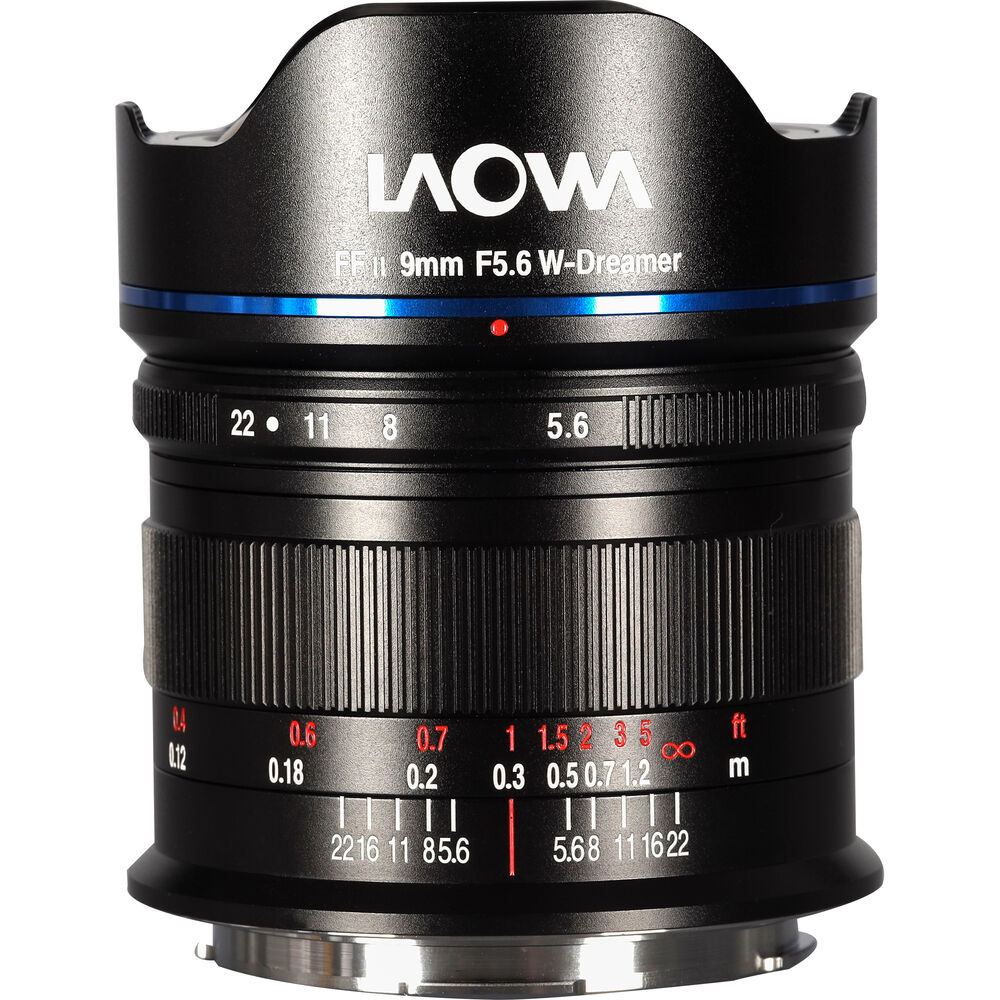 Ultra-wide photography typically means accepting severe distortion, vignetting, and optical compromises, limiting creative applications. Venus Optics' Laowa 9mm f/5.6 FF RL challenges these assumptions by delivering 135-degree field of view on full-frame sensors while maintaining rectilinear projection, meaning straight lines actually remain straight, unlike traditional fisheye lenses.
Ultra-wide photography typically means accepting severe distortion, vignetting, and optical compromises, limiting creative applications. Venus Optics' Laowa 9mm f/5.6 FF RL challenges these assumptions by delivering 135-degree field of view on full-frame sensors while maintaining rectilinear projection, meaning straight lines actually remain straight, unlike traditional fisheye lenses.
The engineering achievement of creating a 9mm rectilinear lens for full frame cameras cannot be understated. Most ultra-wide lenses at these focal lengths embrace fisheye distortion because it's optically simpler to achieve. Creating rectilinear projection at 9mm requires complex optical formulas with multiple aspherical elements and careful distortion correction attention. The result is a lens capturing impossibly wide perspectives while maintaining architectural photography usability.
This lens opens creative possibilities that didn't previously exist. Landscape photographers can capture entire mountain ranges or vast skies with foreground detail that traditional ultra-wides couldn't include. Interior architectural photographers can show complete rooms from close distances, while automotive photographers can capture entire vehicles with dramatic perspective emphasis.
The manual focus and aperture operation might seem limiting in an electronic automation age, but they're actually advantages for the photography types this lens enables. Ultra-wide work typically involves careful composition and hyperfocal distance focusing anyway, making autofocus less critical. The solid mechanical construction and all-metal build quality feel appropriate for a lens designed to venture into challenging environments.
Venus Optics has created something genuinely unique with the 9mm f/5.6. While other manufacturers offer ultra-wide options like RF Canon 10-20mm f/4 L IS STM, Nikon's AF-S 14-24mm f/2.8G ED, and Voigtländer's 10mm f/5.6 Heliar-Hyper, none attempt rectilinear projection at 9mm focal lengths on full-frame sensors. This lens proves that innovative optical design can still push boundaries that seemed impossible just years ago, creating new creative possibilities rather than just refining existing concepts.
7. Nikon Z 58mm f/0.95 S Noct: Surpassing Human Vision
 The Nikon Z 58mm f/0.95 S Noct represents more than another fast lens. It's a statement about possibilities when engineering constraints are abandoned in pursuit of pure optical achievement. With an aperture literally exceeding human eye light-gathering ability, this lens ventures into territory redefining low-light photography capabilities.
The Nikon Z 58mm f/0.95 S Noct represents more than another fast lens. It's a statement about possibilities when engineering constraints are abandoned in pursuit of pure optical achievement. With an aperture literally exceeding human eye light-gathering ability, this lens ventures into territory redefining low-light photography capabilities.
The f/0.95 aperture specification tells only part of the story. What makes the Noct truly extraordinary is that it actually delivers usable image quality at maximum aperture. Most cheaper 50mm-ish f/0.95 designs require stopping down for optimal performance. The Noct breaks this tradition by providing genuine sharpness and contrast wide open, making that extreme aperture practically useful rather than just optically impressive.
Nikon's approach to achieving f/0.95 performance involved engineering innovations pushing manufacturing tolerances to their limits. The optical formula incorporates aspherical elements ground to nanometer precision, while mechanical construction features weather-sealing and build quality matching Nikon's flagship lenses. The manual focus operation, while requiring skill, provides precision necessary for the razor-thin depth of field that f/0.95 creates.
The creative possibilities opened by f/0.95 extend far beyond simple low-light capability. Depth of field at close focusing distances measures in millimeters, creating bokeh effects approaching the surreal. Environmental portraits can isolate subjects against busy backgrounds with surgical precision, while light-gathering power allows handheld shooting in conditions that would challenge any other lens.
While other manufacturers offer f/0.95 options, the Noct combines extreme aperture with modern optical correction and weather-sealed construction. It represents the pinnacle of what's possible when a major manufacturer commits fully to pushing boundaries without compromise, creating a lens that's both technically revolutionary and practically useful.
8. Voigtländer Nokton 29mm f/0.8 MFT: Micro Four Thirds' Speed Champion
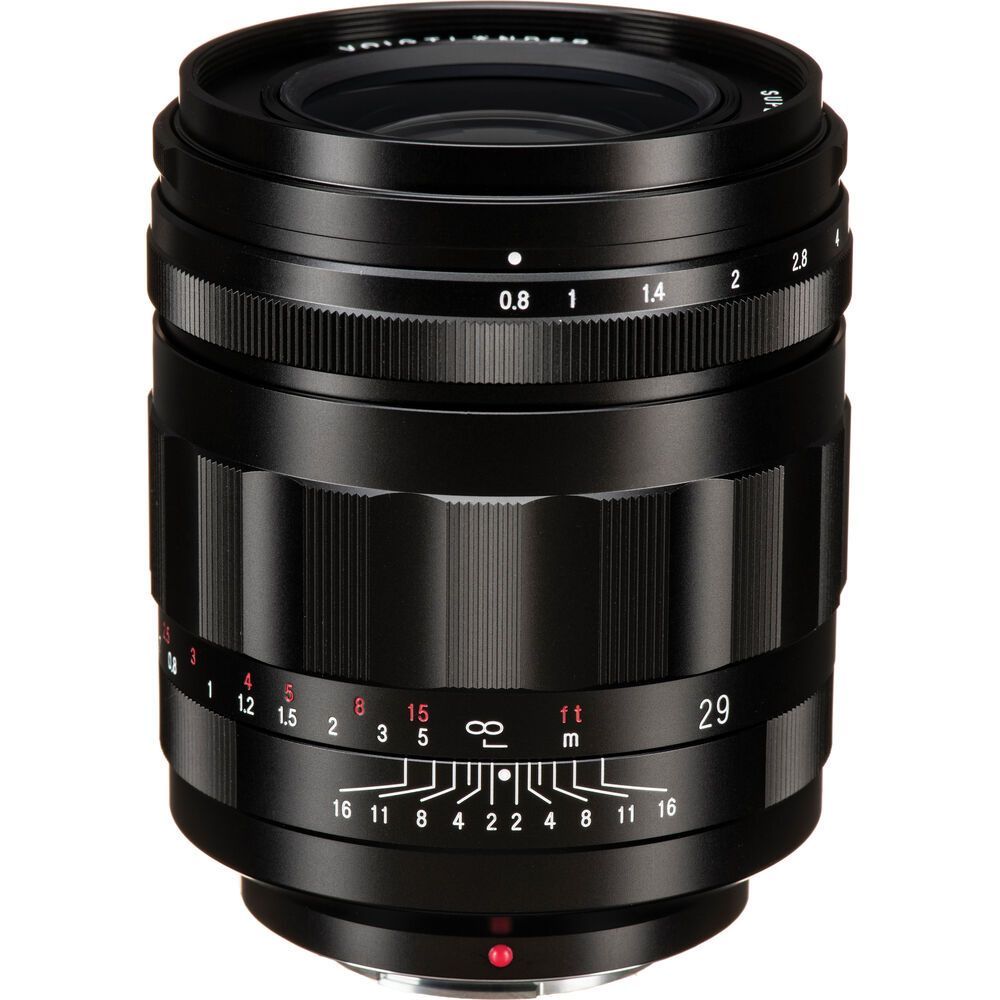 The Micro Four Thirds format has always faced criticism for light-gathering limitations compared to larger sensors, but Voigtländer's Nokton 29mm f/0.8 MFT transforms this perceived weakness into a stunning strength. With an effective field of view equivalent to 58mm on full-frame but an aperture that no full frame lens can match, this lens redefines what's possible on smaller sensors.
The Micro Four Thirds format has always faced criticism for light-gathering limitations compared to larger sensors, but Voigtländer's Nokton 29mm f/0.8 MFT transforms this perceived weakness into a stunning strength. With an effective field of view equivalent to 58mm on full-frame but an aperture that no full frame lens can match, this lens redefines what's possible on smaller sensors.
The f/0.8 aperture represents the fastest commercially available lens for any camera system currently in production. This extreme speed provides light-gathering capabilities exceeding human vision while maintaining manageable size and weight thanks to smaller image circle requirements of Micro Four Thirds.
What makes this lens remarkable isn't just the aperture specification but how it performs wide open. Traditional wisdom suggests that extreme apertures require stopping down for usable sharpness, but the Nokton 29mm delivers impressive central sharpness at f/0.8. Corner performance softens significantly, but for portrait and selective focus work, this actually enhances the dreamy, shallow depth of field characteristics that photographers seek from fast lenses.
The manual focus operation might seem limiting, but it's actually well-suited to the lens' intended applications. At f/0.8, depth of field is so shallow that precise focus control becomes critical, making manual operation advantageous for careful composition work. The smooth, well-damped focusing ring provides tactile feedback necessary for accurate focus placement in challenging conditions.
This lens proves that innovation isn't always about bigger sensors or more complex electronics. By pushing aperture boundaries within Micro Four Thirds system constraints, Voigtländer created something genuinely unique offering capabilities unavailable in any other format. It's a reminder that creative optical design can turn supposed format limitations into distinctive advantages, opening creative possibilities extending far beyond specifications suggest.
9. Laowa 8-15mm f/2.8 FF II Zoom: No Fisheye Needed
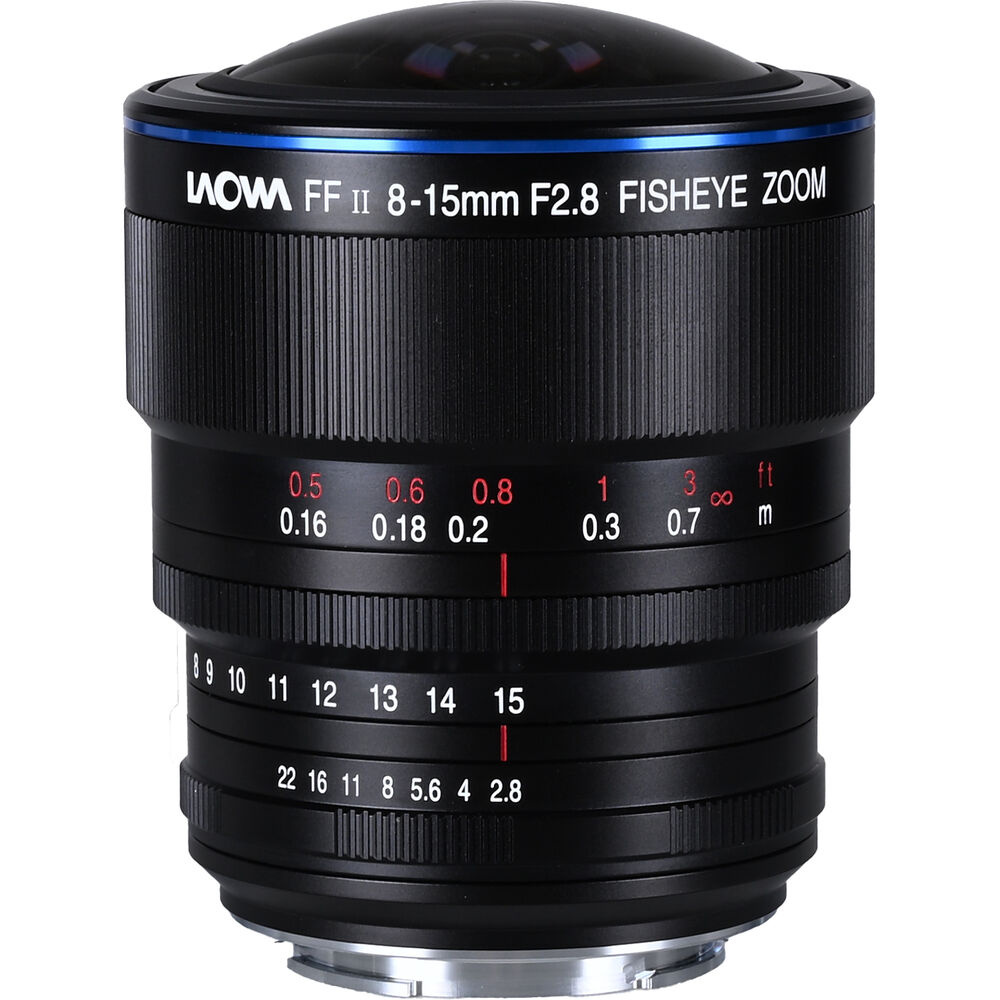 Most fisheye lenses force photographers to choose between circular or diagonal fisheye effects with fixed focal lengths, but Venus Optics' Laowa 8-15mm f/2.8 FF II Zoom revolutionizes this concept entirely. This lens seamlessly transitions between extreme circular fisheye at 8mm to diagonal fisheye at 15mm while maintaining bright constant f/2.8 aperture throughout.
Most fisheye lenses force photographers to choose between circular or diagonal fisheye effects with fixed focal lengths, but Venus Optics' Laowa 8-15mm f/2.8 FF II Zoom revolutionizes this concept entirely. This lens seamlessly transitions between extreme circular fisheye at 8mm to diagonal fisheye at 15mm while maintaining bright constant f/2.8 aperture throughout.
The engineering achievement of creating a fisheye zoom with constant f/2.8 aperture represents a quantum leap beyond traditional fisheye design. Most fisheye lenses use fixed focal lengths because maintaining consistent distortion characteristics and aperture across zoom ranges presents enormous optical challenges. Venus Optics solved these problems by creating a lens that fundamentally changes character as you zoom while maintaining superior light-gathering ability compared to any competing fisheye zoom.
This dual personality with enhanced speed opens creative possibilities extending far beyond traditional fisheye applications. At 8mm, photographers can create complete 180-degree circular images with f/2.8 brightness: perfect for immersive astrophotography or dramatic environmental documentation. Zooming to 15mm provides classic diagonal fisheye coverage with more light-gathering power than traditional f/4 fisheye zooms, enabling handheld shooting in challenging conditions.
While other manufacturers offer fisheye options, like Canon's EF 8-15mm f/4L USM and Sigma's 8-16mm f/4.5-5.6 DC HSM for APS-C cameras, none match the Laowa's combination of full zoom range fisheye effects with constant f/2.8 brightness. This lens proves that even the most specialized optical designs can benefit from both zoom versatility and enhanced speed, creating tools that expand creative possibilities rather than limiting them.
10. Canon TS-E Tilt-Shift Macro Lenses: Perspective Control Meets Close-Up Precision
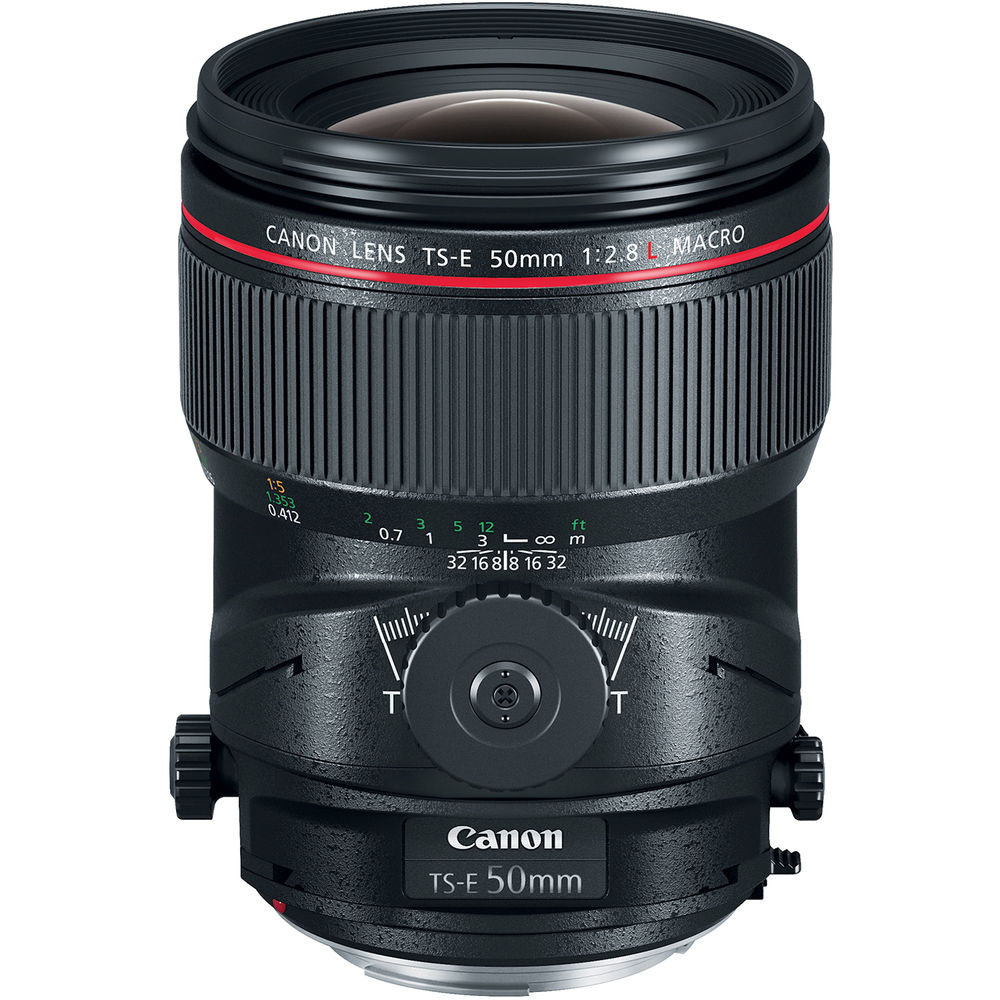 Canon's tilt-shift macro lenses represent the intersection of two specialized optical technologies: perspective control and macro photography. These lenses, the TS-E 50mm f/2.8L MACRO, TS-E 90mm f/2.8L MACRO, and TS-E 135mm f/4L MACRO, combine movements typically found in large-format view cameras with precision focusing capabilities needed for extreme close-up work.
Canon's tilt-shift macro lenses represent the intersection of two specialized optical technologies: perspective control and macro photography. These lenses, the TS-E 50mm f/2.8L MACRO, TS-E 90mm f/2.8L MACRO, and TS-E 135mm f/4L MACRO, combine movements typically found in large-format view cameras with precision focusing capabilities needed for extreme close-up work.
The tilt-shift mechanism allows photographers to control both plane of focus and perspective distortion independently of camera position. In macro photography, this capability becomes transformative. The tilt function can align the plane of focus with subject planes that aren't parallel to the sensor, dramatically increasing depth of field without stopping down aperture, a huge boon for macro photographers. The shift function enables perspective correction for architectural details or product photography where traditional lens positions would create unwanted keystone effects.
These mechanical capabilities require precision engineering pushing lens construction to extraordinary levels. The tilt and shift movements must maintain optical quality across their entire range while providing smooth, accurate control for critical focus adjustments.
The optical performance combines the demanding requirements of both macro and tilt-shift applications. Correction for field curvature, distortion, and chromatic aberration must remain consistent across all movement positions and focusing distances. The result is image quality rivaling dedicated macro lenses while providing creative control impossible with conventional optics.
Professional product photographers, architectural documentation specialists, and technical photographers have adopted these lenses for applications where conventional optics simply cannot achieve required results. The ability to correct perspective while maintaining macro focusing capabilities opens possibilities for scientific documentation, fine art reproduction, and commercial photography that would require multiple specialized lenses or complex post-processing to achieve otherwise.
Conclusion: The Impossible Made Possible
These ten lenses represent more than just extreme specifications. They're proof that optical innovation continues to push boundaries that seemed impossible just years before their creation. Each one solves problems that photographers didn't even know they had, opening creative possibilities that extend far beyond their technical specifications.
What makes these lenses truly remarkable isn't just their extreme nature, but their availability. These aren't concept pieces or limited editions locked away in corporate vaults. They're production lenses that photographers can order, own, and use to create images that were literally impossible before their existence.
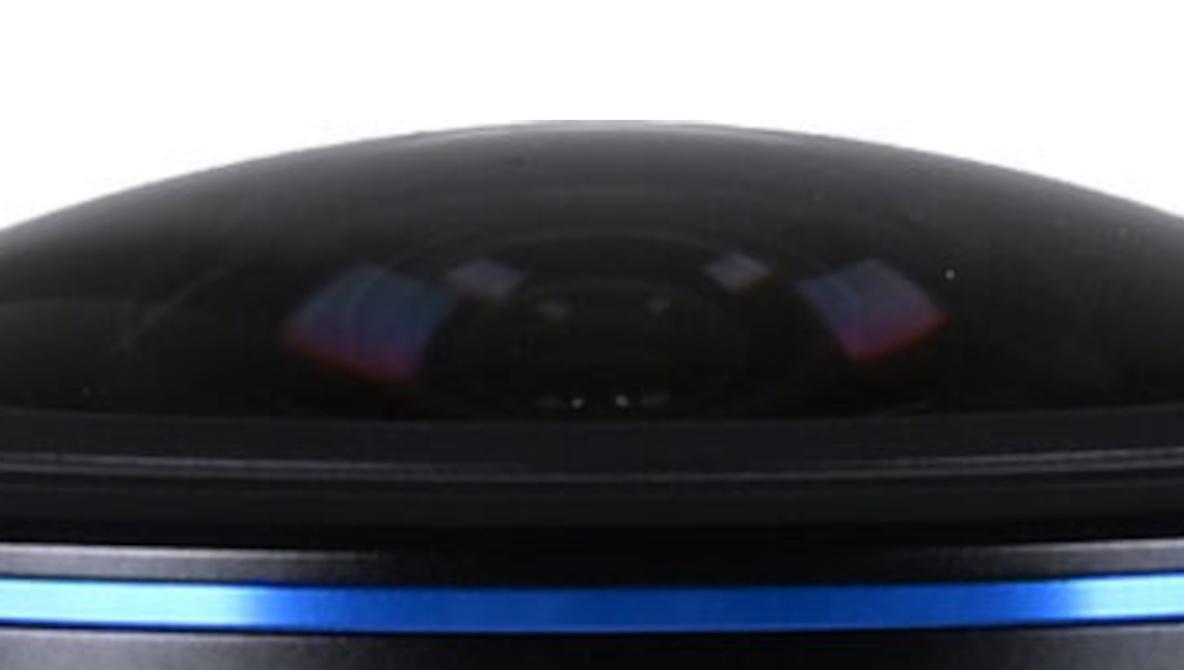






I purchased a used Sigma 800mm f/5.6, the precursor to the 300-800mm lens in around 2007, think I paid around $2200 on Ebay for it. Loved the lens and took it on a few trips to Africa and Alaska, came with a big metal case to carry it around. Yes, it was heavy but had a long reach even in low light. That being said, I sold it and now enjoy the Canon RF 200-800mm which is sharper than the Sigma, a lot smaller and lighter and with IBS it's no problem with the f/stop in early morning light.
You mention the Canon 200/2.0, but not the earlier 200/1.8?
The 200 f/2 is more reasonably priced, more easily serviced, and has IS. Seemed like the better choice.
Sigma needs to make a 300-800mm lens with a fixed f/2.8 aperture, and then include a built in 2X teleconverter.
That would make a very convenient and ultra portable zoom lens, perfect for long hikes and finding cute wildlife to photograph.
Hahahaha! I predict it would be over 30 pounds, more than double the 13 pounds that my 300-800mm weighs.
.
Another great and useful article, Alex ...... you been killin' it!
.................... .................... .................... .....................
A lens that could have been on your list:
The Laowa 15mm f4 Macro Shift ...... yes, it is 15mm on a full frame, and yes it actually has true macro capability with a 1:1 reproduction ratio, and yes it also has shift functionality (but no tilt function). And it is only a few hundred bucks. I have one in the Canon EF mount and another in the Sony mount.
"Wide angle" and "true macro" are almost never seen together, so this lens is a true anomaly.
.................... .................... .................... .....................
I am so happy to see that you included the Laowa Macro Probe on your list. That and the similar lens by Astr-Hori are the first lenses that popped into my mind when I saw the title of this article.
.................... .................... .................... .....................
I have the 300-800 Sigma that you included. It was my most-used lens from 2014 thru 2022.
There is another Sigma zoom that would fit nicely on this list, the 60-600mm f5.6.
A full 10x range surely makes it extreme, and it is readily available both new and used from just about any marketplace, and is affordable, relative to other tele superzooms.
.
I'm jealous you had the 300-800mm; I've always wanted to try it! Totally agree about both the Laowa and other Sigma; I very nearly put the 60-600mm on the list. Perhaps there's room for a part two.
Oh yeah a part 2 would be great! The Astr-Hori macro probe could be there, too. Wow - we already have 3 of the 10 for the next article! Ha!
.
Another great and useful article, Alex ...... you been killin' it!
.................... .................... .................... .....................
A lens that could have been on your list:
The Laowa 15mm f4 Macro Shift ...... yes, it is 15mm on a full frame, and yes it actually has true macro capability with a 1:1 reproduction ratio, and yes it also has shift functionality (but no tilt function). And it is only a few hundred bucks. I have one in the Canon EF mount and another in the Sony mount.
"Wide angle" and "true macro" are almost never seen together, so this lens is a true anomaly.
.................... .................... .................... .....................
I am so happy to see that you included the Laowa Macro Probe on your list. That and the similar lens by Astr-Hori are the first lenses that popped into my mind when I saw the title of this article.
.................... .................... .................... .....................
I have the 300-800 Sigma that you included. It was my most-used lens from 2014 thru 2022.
There is another Sigma zoom that would fit nicely on this list, the 60-600mm f5.6.
A full 10x range surely makes it extreme, and it is readily available both new and used from just about any marketplace, and is affordable, relative to other tele superzooms. This is my most used lens from 2023 to the present.
.